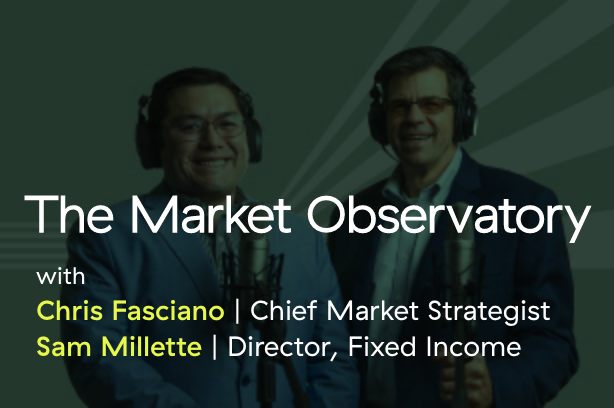 The first quarter of 2025 took investors on a rollercoaster, driven by on-again, off-again tariff policy announcements. From Election Day through February 19, 2025, the S&P 500 experienced a 5.7 rally, including a 3.9 percent increase to start the year. Tariffs were initially tempered from what had been discussed on the campaign trail, and investors focused on the pro-growth elements of the Trump administration agenda.
The first quarter of 2025 took investors on a rollercoaster, driven by on-again, off-again tariff policy announcements. From Election Day through February 19, 2025, the S&P 500 experienced a 5.7 rally, including a 3.9 percent increase to start the year. Tariffs were initially tempered from what had been discussed on the campaign trail, and investors focused on the pro-growth elements of the Trump administration agenda.
The back half of the quarter brought noise on the policy front, particularly tariffs. The uncertainty surrounding the end game and the potential impact on economic growth weighed on investors, consumers, and businesses. As a result, the S&P 500 declined 10 percent from its high. It closed down 4.27 percent for the quarter, with a 5.63 percent decline in March.
So, let’s take a closer look at what happened in Q1—and what it could mean for the road ahead.
Deconstructing the Selloff
Much of the selloff was driven by the same stocks that led to big returns in the previous two years: the Magnificent Seven (Alphabet, Amazon, Apple, Meta, Microsoft, Nvidia, and Tesla). The Magnificent Seven have declined 14.8 percent year-to-date, while they collectively returned 156.1 percent over the previous two years. By the end of 2024, they composed over one-third of the S&P 500 market capitalization. They are an important part of the market, but they are not indicative of the return of a diversified portfolio. The other 493 stocks in the S&P 500 are up 0.4 percent for the year, and a diversified 60/40 hypothetical portfolio* had a slight decline of less than 0.5 percent.
The market turmoil over the past several weeks and the impact of concentration at the top of U.S. indices are masking the broad market’s performance. Seven of the 11 Global Industry Classification Standard (GICS) sectors have had positive returns this year. This change in market leadership led to a strong quarter for value investing on a relative basis, as seen in the chart below.

Source: The Daily Shot, Esha Dey; @BBGIlltelligence
International stocks have outperformed U.S. stocks by around 1,000 basis points on the strength of improving fundamentals due to increased spending on defense and infrastructure in Europe. Bonds also continue to have positive returns year-to-date, up 2.78 percent.
Lately, we believe the focus has shifted from targeting singular investments to focusing on a much broader allocation to navigate uncertainty.
Taking the Long View
Now that the first quarter is in the books, everyone wants to know what the rest of the year will look like. If I had a clear crystal ball, it would certainly make my job easier. But as it often is, mine is a little bit muddy right now. Still, perceptions can quickly change, as we saw in mid-February. That said, when viewed through a long-term lens, the correction of 10 percent we saw within the quarter is normal.

Source: Goldman Sachs Global Investment Research, as of March 17, 2025
Certainly, declines can continue, which we’ve seen a few times over the past five years. In general, corrections have been a good time to look for opportunities to enhance portfolios for long-term investors, as discussed in my previous post.
Coming Up: Tariffs, Employment, Earnings, and the Fed
Concerns about more tariffs, inflation, faltering economic growth, and what (if anything) the Fed can do will continue to weigh on markets until we have clarity on the path ahead. The new quarter appears to be starting with more news on tariffs and an important look at the employment market on Friday. This report could calm investors’ concerns about consumer health or may cause more questions about the outlook for spending over the next couple of quarters.
We will also hear from corporate America as companies start reporting first-quarter earnings. During fourth-quarter earnings calls from mid-December through early March, FactSet data found it was the lowest number of companies mentioning the term “recession” since Q1 2018. It is worth paying attention to what these companies will say about the economy just a couple of months later and to their outlook for earnings growth relative to expectations coming into the year.
Finally, the Fed has scheduled meetings in the first week of May and the third week of June. We expect the Fed will remain data-dependent, but any deterioration in economic fundamentals could see the central bank adjust interest rates in June.
Interest rates, valuations, and earnings growth are key to understanding how the market will move. We will be watching all closely as we get updates in the short to intermediate term.
Navigating Volatility
Understandably, there is heightened concern about the path forward for the U.S. economy and how it will affect markets. There is no clear answer to how that will unfold—but there never is.
There is also no one-size-fits-all portfolio construction solution to navigate volatility. At times like this, what investors can do is ensure that portfolios align with the long-term objectives they are trying to achieve and look for opportunities to rebalance when portfolios are out of line with those objectives. We believe that diversification is working, and we expect it will continue to do so.
*A 60/40 hypothetical portfolio is an allocation represented by 45 percent Russell 3000 Index, 15 percent ACWI ex U.S. Index, 34 percent Bloomberg U.S. Aggregate Bond Index, and 6 percent Bloomberg 1-3 Month U.S. Treasury Bills Index, for illustrative purposes only. Unlike investments, indices do not incur management fees, charges, or expenses. No specific investments were used in this example. Actual results will vary.
The Global Industry Classification Standard is a system developed by MSCI and S&P Dow Jones Indices to categorize companies based on their primary business activities, used by investors and analysts for analysis and comparison.


 Print
Print

